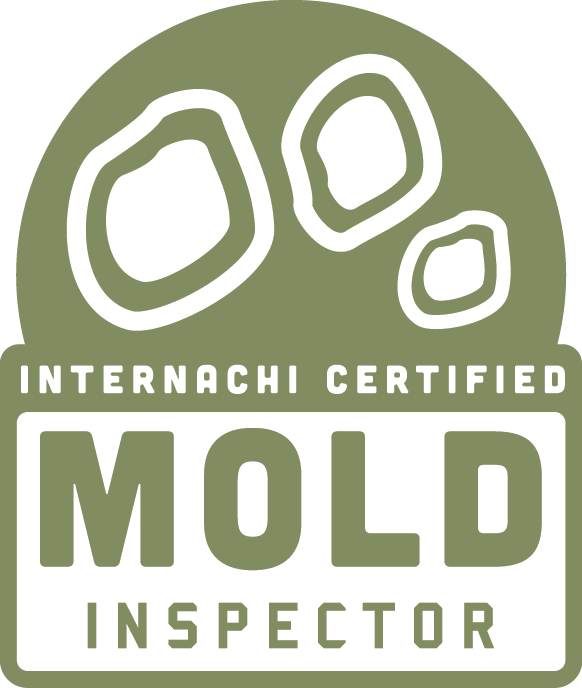Mold Inspection and Testing
www.APLmoldinspection.com
The objective of mold testing and inspection is to provide home owners and buyers better understanding of the air quality in their homes. There are two types of mold inspections: "Complete Mold Inspection" and "Limited Mold Inspection." All sampling is performed according to the IAC2 Mold Sampling Procedures.
The Complete Mold Inspection is performed in accordance with the Mold Inspection Standards of Practice of the International Association of Certified Indoor Air Consultants (www.IAC2.org).
A COMPLETE MOLD INSPECTION INCLUDES:
A non-invasive, visual examination of the readily-accessible, visible, and installed systems and components of the entire building, as outlined in the IAC2 Mold Inspection Standards of Practice;
Moisture, temperature and humidity measurements;
At least three air samples (one indoor and two outdoor)—additional tests are available per customers request at additional cost; and
Possibly one surface sampling of an area of concern.
THE MOLD INSPECTION REPORT SHALL ALSO INCLUDE:
Moisture intrusion;
Water damage;
Musty odors;
Apparent mold growth;
Conditions conducive to mold growth;
The results of a laboratory analysis of all mold samplings taken; and
Any system or components listed in the Standards of Practice that were not visually examined, and the reasons they were not inspected.
Unless the inspector and client agree to an addendum to a limitation of the inspection, the inspection will be performed on the primary building and attached parking structure. Any additional structures can be inspected at the additional cost. Complete mold inspection will take at least 2 hrs.
The cost of a complete mold inspection is $300. If orederd with home inspection the cost of mold inspection is $185
Limited Mold Inspection
The difference between a Complete Mold Inspection and a Limited Mold Inspection is a limitation of the non-invasive, visual examination of the building. The Limited Mold Inspection does not include a visual examination of the entire building, but is limited to a specific area of the building identified and defined by the client and/or inspector.
Prior to the inspection, the inspector and client shall agree to the limitations of the visual examination. As a result, potential sources of mold growth in other areas of the building may not be inspected.
A LIMITED MOLD INSPECTION INCLUDES:
A non-invasive, visual examination of the readily accessible, visible, and installed systems and components of only the specific room or area defined by the inspector;
At least three air samples (one indoor and two outdoor);
Possibly one surface sampling at an area of concern.
THE MOLD INSPECTION REPORT SHALL ALSO INCLUDE:
Moisture intrusion;
Water damage;
Musty odors;
Apparent mold growth;
Conditions conducive to mold growth; and
The results of a laboratory analysis of all mold samplings taken;
The Limited Mold Inspection is a fast and affordable way to confirm the existence of mold and, if possible, determine the type of mold present in a specific, defined area of the building.
The cost of a Limited mold inspection is $200.
An example of a Limited Mold Inspection:
The inspector’s client requests a Limited Mold Inspection to be performed. The scope is specifically limited to the under-floor crawlspace of the building. Only the crawlspace will be inspected, including a noninvasive examination of the crawlspace. At least one mold sample will be taken, typically a tape sample, if apparent mold is visible.
What is Mold?
Molds are organisms that are part of the natural environment and play an important role in our ecological system by breaking down organic material. Molds are neither plants nor animals. They belong to the kingdom, Fungi.
Fungi do not make their own food the way plants do. Fungi get nourishment from other living organisms by digesting food externally and absorbing nutrients directly through its cell walls. The main role of fungi in the ecosystem is to break down dead materials, such as fallen leaves, trees, insects and help decompose animal carcasses. Fungal enzymes that assist fungi in breaking down dead materials are what enable fungi to damage wooden and other organic components in a building. Molds can damage food, stored goods, and building materials of houses.
Mold spores are ubiquitous and can be found both indoors and outdoors. Mold spores cannot be eliminated from indoor environments. Some mold spores will be found floating through the air and on settled dust; however, they will not grow if moisture is not present.
Mold is not usually a problem indoors—unless mold spores land on a wet or damp spot and begin growing. As molds grow, they digest whatever they are growing on. Unchecked mold growth can damage buildings and furnishings; molds can rot wood, damage drywall, and eventually cause structural damage to buildings. Mold can cause cosmetic damage, such as stains, to furnishings. The potential human health effects of mold are also a concern. It is important, therefore, to prevent mold from growing indoors.
MOLD BASICS
The key to mold control is moisture control.
If mold is a problem in your home, you should clean up the mold promptly and fix the water problem.
It is important to dry water-damaged areas and items within 24 to 48 hours to prevent mold growth.
SYMPTOMS OF MOLD EXPOSURE
There are many symptoms of mold exposure. Current evidence indicates that allergies are the type of diseases most often associated with molds. An allergic reaction is the most common symptom which could include wheezing and difficulty breathing.
According to the Centers for Disease Control, inhalation of fungal spores, fragments (parts), or metabolites (mycotoxins and volatile organic compounds) from a wide variety of fungi may lead to or exacerbate immunologic (allergic) reactions, cause toxic effects, or cause infections.
Certified mold inspectors cannot offer medical advice to the clients. This article is provided as information only. People with health problems that may be related to mold should seek a physician trained in occupational, environmental or allergy medicine. Clients may wish to consult with a healthcare provider regarding any health problems they might be experiencing.


